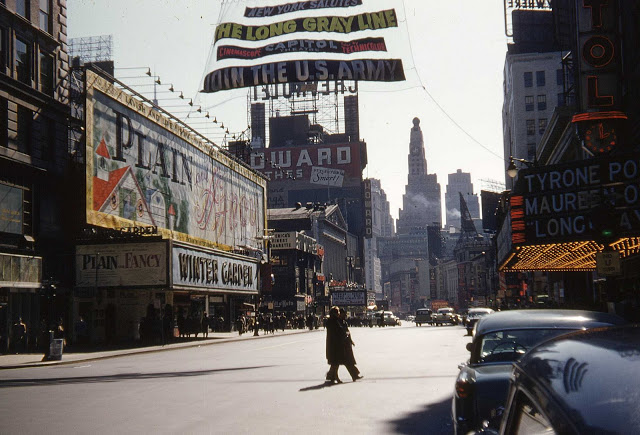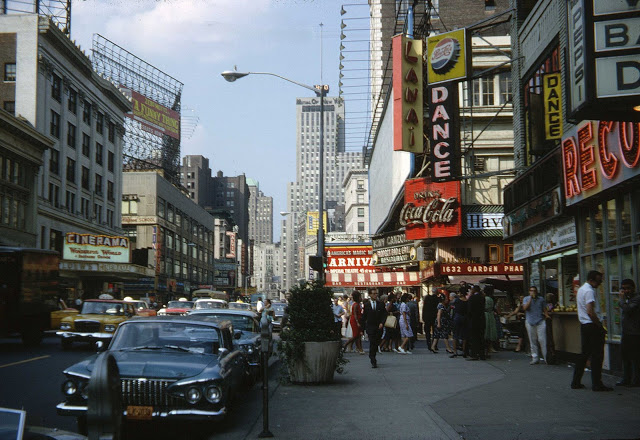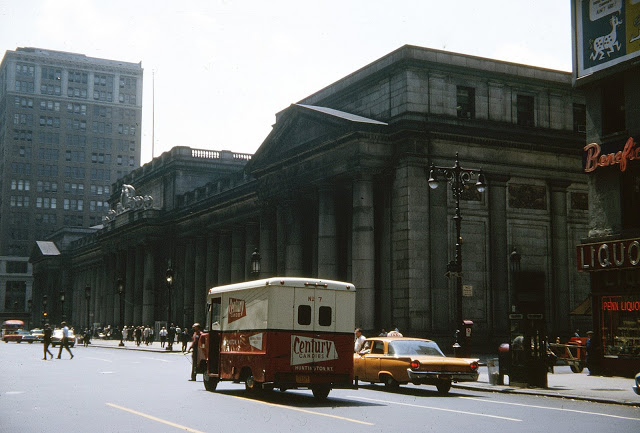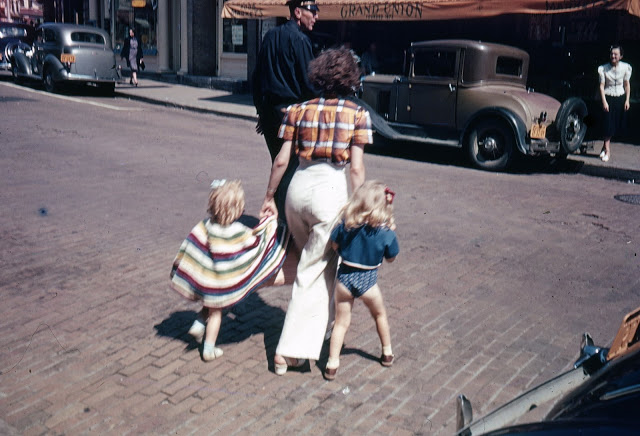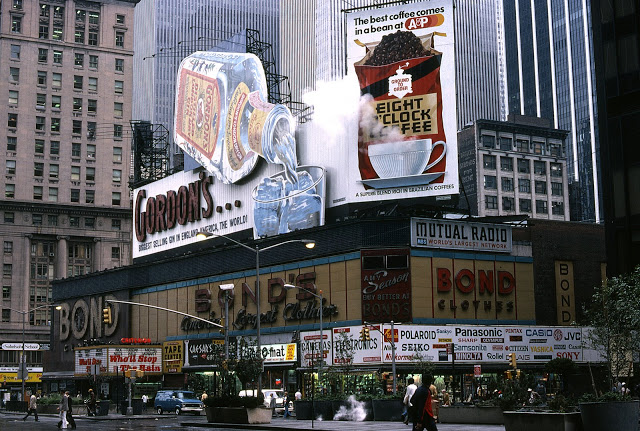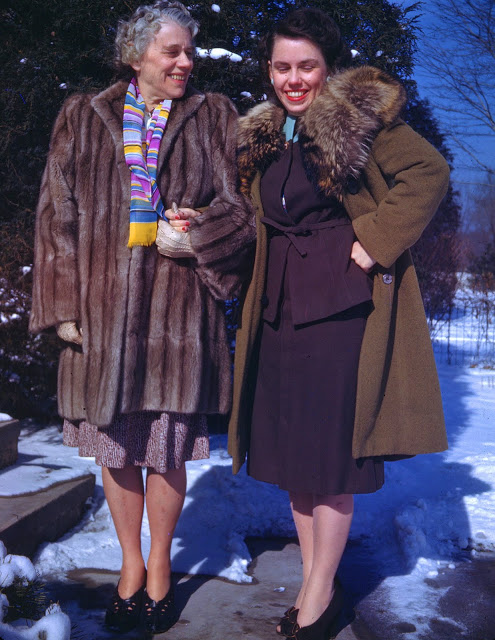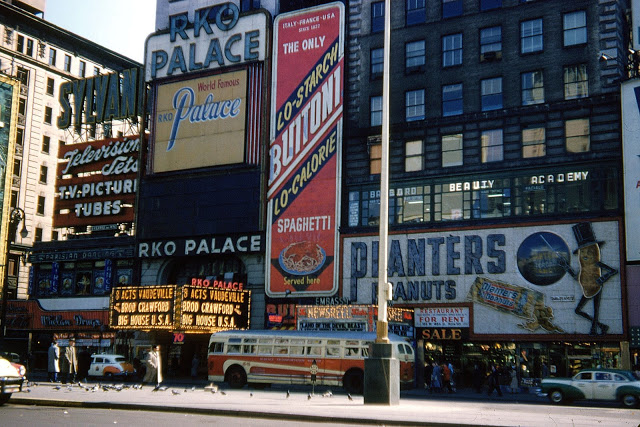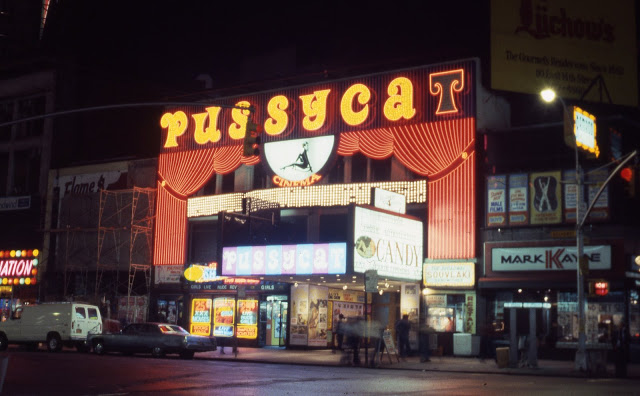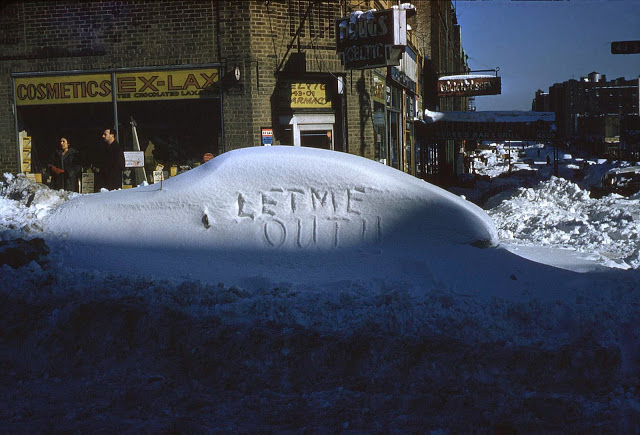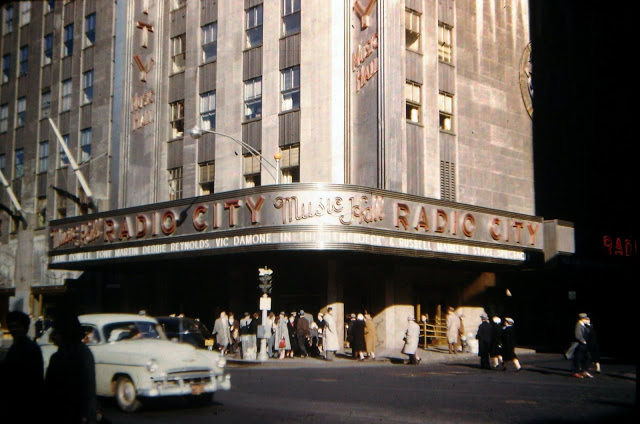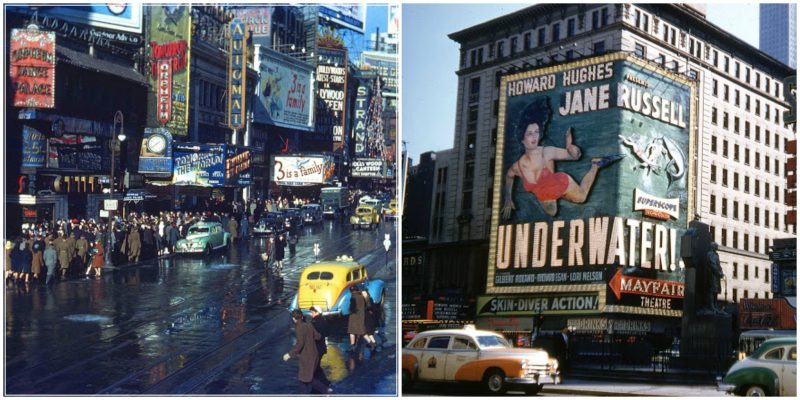New York became the most populous urbanized area in the world in the early 1920s, overtaking London. The metropolitan area surpassed the 10 million mark in the early 1930s, becoming the first megacity in human history.The difficult years of the Great Depression saw the election of reformer Fiorello La Guardia as mayor and the fall of Tammany Hall after eighty years of political dominance.
Returning World War II veterans created a postwar economic boom and the development of large housing tracts in eastern Queens. New York emerged from the war unscathed as the leading city of the world, with Wall Street leading America’s place as the world’s dominant economic power. The United Nations Headquarters was completed in 1952, solidifying New York’s global geopolitical influence, and the rise of abstract expressionism in the city precipitated New York’s displacement of Paris as the center of the art world
Just before the iconic Kodachrome film processing went extinct, the amateur photographer Charles Weever Cushman was kind enough to donate his collection of 14,500 color slides to Indiana University.The collection consists of Kodachrome slides taken in the period between 1938 to 1968, including images of all around the world.
Take a peek in the nostalgic colors of Vintage New York:
Just before the iconic Kodachrome film processing went extinct, the amateur photographer Charles Weever Cushman was sweet enough to donate his collection of 14,500 color slides to Indiana University.
The collection consists of Kodachrome slides taken in the period between 1938 to 1968, including images of all around the world.
Take a peak in the nostalgic colors of Vintage New York:
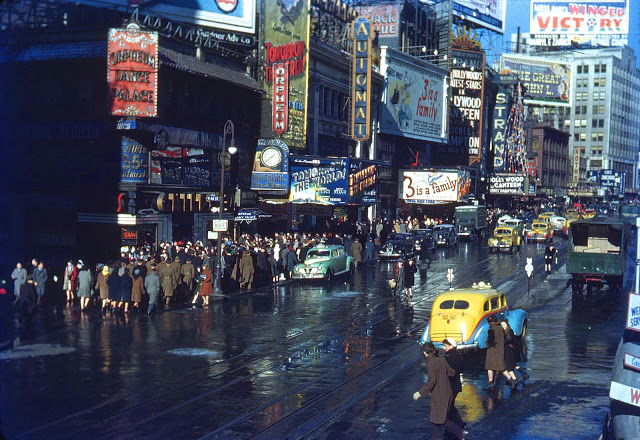
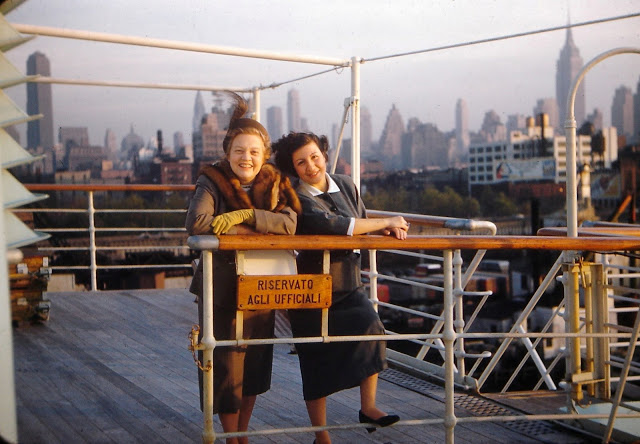
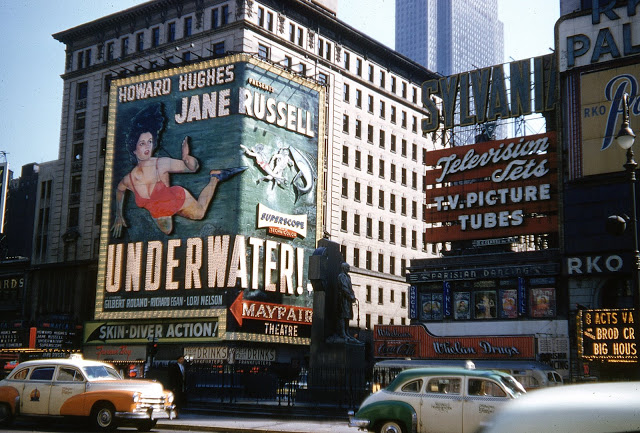
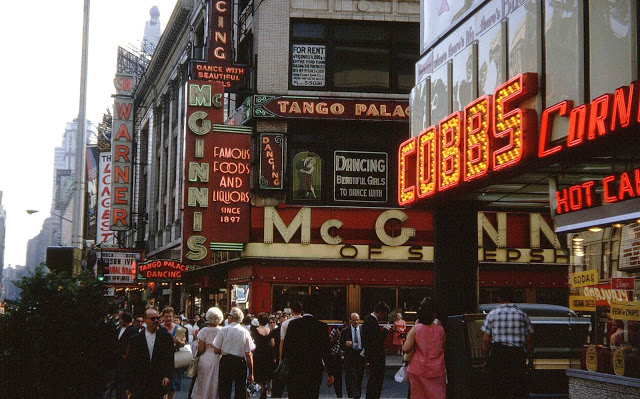
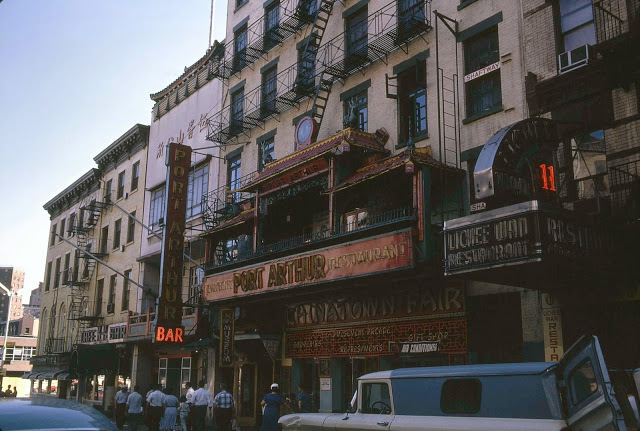
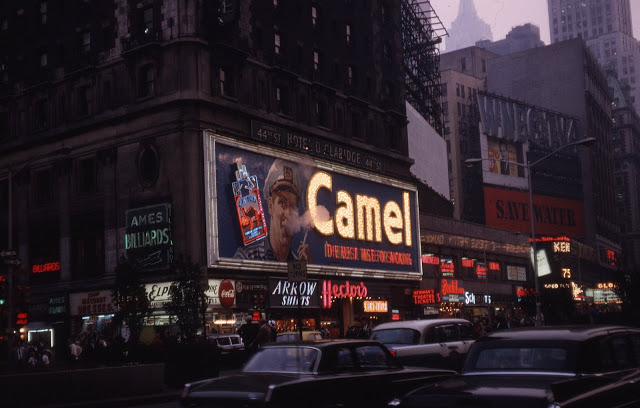
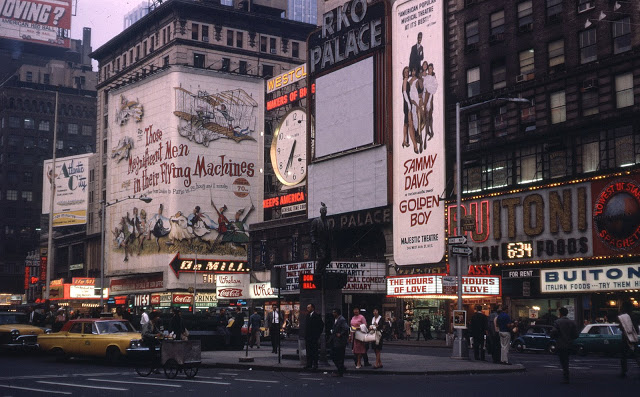
During the ’60s, a gradual economic and social decay set in. A symptom of the city’s waning competitiveness was the loss of both its longtime resident National League baseball teams to booming California; the Dodgers and the Giants both moved after the 1957 season. A sports void was partially filled with the formation of the Mets in 1962, who played their first two seasons at the Polo Grounds, the former home of the Giants, before moving toShea Stadium in Queens in 1964.
The passage of the federal Immigration Act of 1965, which abolished national-origin quotas, set the stage for increased immigration from Asia, which became the basis for New York’s modern Asian American community.
On November 9, 1965, New York endured a widespread power blackout along with much of eastern North America. (The city’s ordeal became the subject of the 1968 film, Where Were You When the Lights Went Out?) The postwar population shift to the suburbs resulted in the decline of textile manufacturing and other traditional industries in New York, most of which also operated in extremely outdated facilities. With the arrival of container shipping, that industry shifted to New Jersey where there was more room for it. Blue-collar neighborhoods began to deteriorate and become centers of drugs and crime. Strip clubs and other adult businesses started filling Times Square in the late ’60s.
In 1966, the US Navy decommissioned the Brooklyn Navy Yard, ending a command going back to the early 19th century. It was sold to the city. The Yard continued as a site for shipbuilding for another eleven years.
